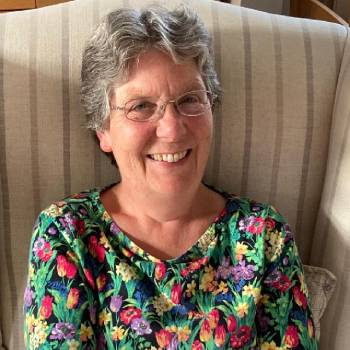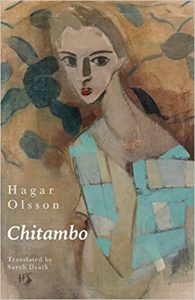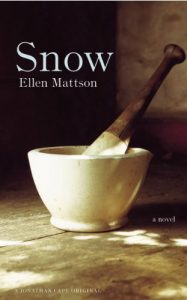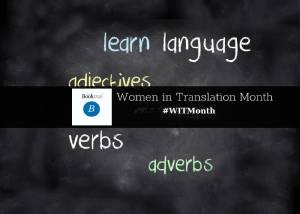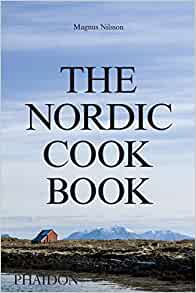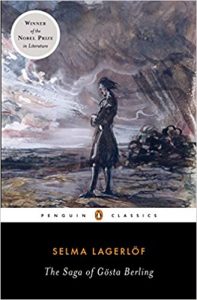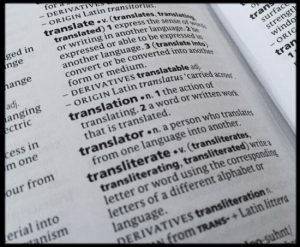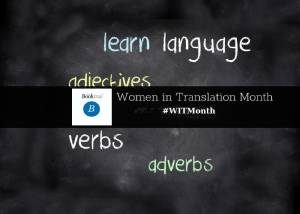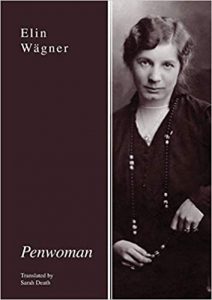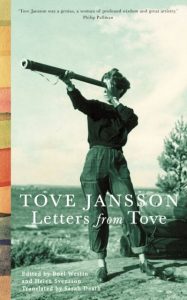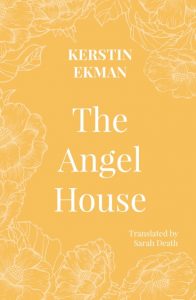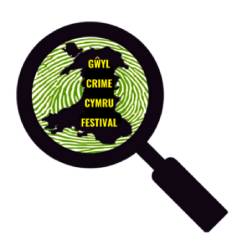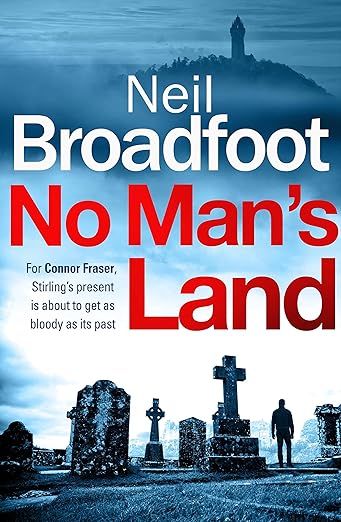WIT Month Meet Translator Sarah Death
.Women in Translation Month – Sarah Death
This month it’s all about the female writers who are translated into various languages. Great stories travel, but translated stories travel even further. Who is behind these translations? Let’s meet translator Sarah Death who works from Swedish to see what a responsibility as well as an honour this is!
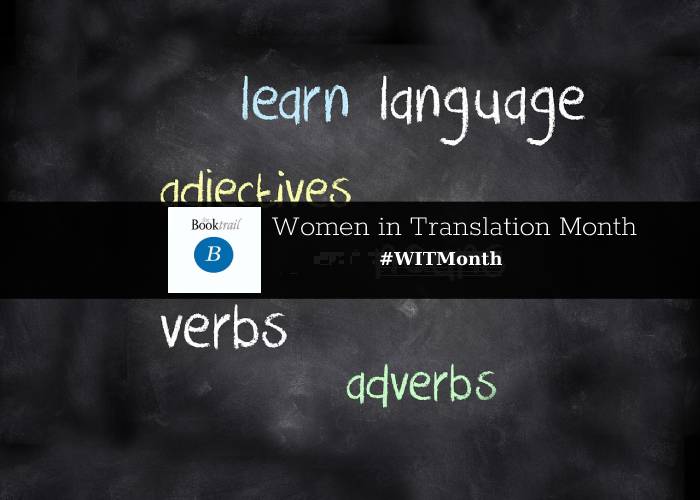
HI Sarah and welcome to The BookTrail!
What kind of books do you translate?
I‘ve translated fiction, non-fiction and children’s books. The fiction has covered many different genres, from crime stories to literary works. I have translated the works of several nineteenth-century women writers, including Fredrika Bremer’s The Colonel’s Family (1830-31), and Victoria Benedictsson’s excoriating dissection of marriage as a mercenary transaction, Money (1885).
In addition, I have translated several works by Nobel prizewinner Selma Lagerlöf.
Most of all, I am keen to translate and champion the work of women writers whenever I can, so theirs are the books I have chosen to focus on in this interview with Booktrail for Women In Translation Month. Chitambo, (Norvik Press) written in 1933 by Finland-Swedish modernist Hagar Olsson, was one of my favourite translation projects with its wry humour and vivid evocations of Helsinki.
Visit the locations of Chitambo
Among contemporary novels I particularly enjoyed working on are Lena Andersson’s painfully funny Wilful Disregard, set in artistic and academic circles in modern-day Stockholm and Ellen Mattson’s historic gem Snow, set in a small town on Sweden’s rocky west coast in 1718.
Visit the locations in Ellen Mattson’s Snow
What languages do you translate from and how did you learn them?
I translate mainly from Swedish (and Finland-Swedish, the language of the Swedish community in Finland). I started learning Swedish at university, where I took a modern languages degree and specialised in German and Swedish.
You sit down in front of a text to work on. Where do you start?
I simply start at page one and feel my way forward, but just occasionally, when the opening pages seem of particular importance and I want to be ‘in the voice’ before I tackle them, I will start from chapter two and come back to the opening later. Sometimes I will have started my research before I embark on the book but often I do it as I go along.
Do you work on one page/chapter at a time or do drafts like an author?
I work through the book chronologically and produce a draft, pausing for any research I need to do along the way, and then I go back over the draft and polish it, sometimes several times. Individual translators’ approaches vary, but my first draft is always much more than just a rough approximation, and I prefer to invest a lot of time at that stage.
Do you read the entire book before you start?
Yes. I don’t want to be caught out by any surprises later on. I need to know which topics and vocabulary will require research, if any.
The Nordic Cook Book
What kind of research do you do?
This varies hugely from project to project. Sometimes the project requires a lot of detail on a subject, but sometimes all I need is a few words of the right vintage, which I can often find by consulting major monolingual dictionaries like Svenska akademiens ordbok and the Oxford English Dictionary. Like Autolycus in The Winter’s Tale, we translators are snappers-up of unconsidered trifles, always moving on to the next item, and it is enormously helpful that so much is now accessible via a well-targeted online search.
In my early career, I had to set days aside for visits to the British Library or other academic libraries to track down obscure words and meanings. Quotations, be they Biblical or not, are rarely flagged up as such, so it is a question of developing an eye/ear for them. Another recurring challenge is the food and drink of particular places and periods. Again, the internet is a great boon, as are cookery classics like Mrs Beeton’s Book of Household Management. I was recently given a copy of Magnus Nilsson’s magnificent tome The Nordic Cookbook (2015), which I use both for cookery ideas and as a research tool.
Find out more about Women in Translation Month
What kind of relationship do you have with the author you are translating?
This varies vastly. Some like to be closely involved, some less so, particularly if it happens to be a book that they translated a long time ago. Genre fiction writers are often happy for me ‘just to get on with it’. Authors from much earlier periods are sadly no longer around to answer my enquiries but with well-known authors like Selma Lagerlöf, a good deal of literary criticism has been written, so I can sometimes find clues there.
Visit the locations of The Saga of Gösta Berling
Why did you want to be a translator and a literary one at that?
At university I felt the translation classes were the most terrifying yet fascinating and strangely therapeutic aspects of the course. Literary modules that I later studied as part of the degree made me want to introduce these authors to the anglosphere.
What book would you love to work on and why?
Selma Lagerlöf’s debut novel, the astonishing and atmospheric Gösta Berlings saga (The Saga of Gösta Berling), written in 1891. She penned the first five chapters when she was just a young trainee teacher, entered them for a competition, and won! It was the start of an amazing writing career that brought her national and international fame. This would be a new translation of a book that has been tackled by quite a few translators to English, most recently and completely by Paul Norlén.
Visit the locations of The Saga of Gösta Berling
Disgraced clergyman Gösta Berling, a complex and imperfect man in search of love and redemption, is recruited to a gang of self-styled ‘cavaliers’ whose exploits cause havoc around the wolf-frequented shores of Lake Fryken in the beautiful province of Värmland. For the literary traveller to Sweden, Värmland is warmly recommended and Lagerlöf’s home, Mårbacka, makes a wonderful day out.
Visit Lagerlöf’s home, Mårbacka
How long does it take to translate a book on average?
I am rarely just translating; I tend to juggle it with other tasks such as my role at a small publisher, mentoring, responding to copy editors of translations already delivered, etc. A short book or a children’s book could take, say, three or four months. Something longer and/or more technically demanding could take me nine months, even a year.
Do you think translators get enough recognition?
Sometimes! There has been a sea change in how much attention is paid to literary translators and there is a great deal more interest in their role than there used to be. But that doesn’t stop publishers, agents and critics and other players tending to leave out their names in publicity materials, websites, reviews and so on. Securing decent remuneration continues to be rather a battle, even for experienced literary translators. But translators themselves have become a stronger, more professional and collegial community, and even have their own trades’ union in the shape of the Society of Authors, an umbrella group of which the Translators’ Association is part.
Find out more about Women in Translation Month
The Emerging Translators’ Network
Advice for emerging translators?
There is a great deal more advice and help for emerging translators than used to be the case. Online forums, mentorship schemes, summer schools and other courses are all available. The Emerging Translators’ Network is an invaluable support network for early-career translators into English:
But above all I would say: dive in and get started, even if your translations are unlikely to get into print at first. If you dream of becoming a literary translator, you essentially have two options. You can yearn fruitlessly for the day when you will magically become one, or you can spend an hour this evening working on a literary translation of your choice. This will make you a literary translator, albeit at a very early stage of your career.

Find out more about Women in Translation Month
How do you keep your languages fresh?
In normal times I would travel to conferences and the Gothenburg Book Fair. Similarly, I would meet many of my Nordic contacts at the London Book Fair. With all the Covid restrictions, however, it has been mainly a question of virtual meetings and online conferences. These have proved very interesting but of course they are one-dimensional experiences. All the personal chemistry and cultural extras are missing.
I always try to keep reading extensively in both languages, in a wide variety of genres. Reading in my target language is at least as important as reading in my source language. What ultimately matters is the English text that I create when I translate. Wide reading also stimulates me to keep my English flexible and responsive to each new context. I don’t want to lapse into ‘translationese’ or a lazy default mode that always translates a given phrase the same way.
Novel in a foreign language you’ve read that hasn’t been translated into English yet.
I am very keen to see more books by the Swedish author Elin Wägner in English. Wägner’s remembered for her feminism, pacifism and early environmentalism. However, today, she is probably best known for her novel of the women’s suffrage movement in Sweden, Penwoman. I would love to translate other novels by Wägner such as The Dialogue Goes On (1932). This book is her irreverent and passionate story of the gender divide and female communities. Most of all, it’s about what happens when gardener Kristina Ring finds herself elected to the Swedish Parliament.
Find out more about Women in Translation Month
Which of your non-fiction projects has felt most significant?
I would say Letters from Tove, the collected and illustrated letters of Finland-Swedish writer, artist and Moomin creator Tove Jansson. She was a prolific letter writer. She documented in detail her friendships and loves, her travels and her love of island life
Letters from Tove follows the writer all over Finland as well as to Sweden, Paris, London, Italy and beyond. It would certainly make an adventurous book trail. It was the 2020 runner-up in the Warwick Prize for Women in Translation.
A collector’s edition of the set of four novels by Norvik Press.
Of all your translation projects, which has been your favourite?
The Angel House (1979, English translation Norvik Press 2002 – It is the third part of the so-called Katrineholm quartet or ‘Women and the City’ series, and is is set in central southern Sweden over the century in which the countryside is annexed by the railway, world wars leave their mark even in neutral Sweden and women’s lives and work are slowly transformed.
With so many thanks to Sarah and all the women she has translated!
What a way to celebrate August by reading one of Sarah’s translated women!

